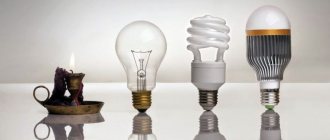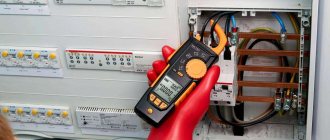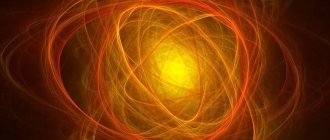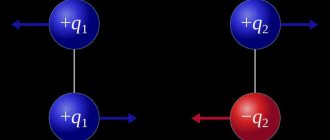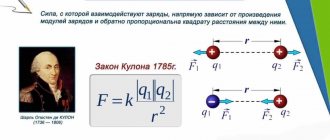Lighting parameters
The light captured by the human eye is nothing more than electromagnetic radiation, the wavelength of which ranges from 400 to 780 nm. Pulses with parameters outside these boundaries are no longer perceived by our vision - these are ultraviolet (below 400 nm) and infrared (above 780 nm) radiation. The lighting engineering industry studies quantitative and qualitative parameters that characterize the specific characteristics of all light-emitting devices.
The main quantitative indicators of lighting devices are illumination, brightness, luminous intensity and luminous flux. For any calculations in lighting engineering, you must have some basic information, which includes:
- Dimensions of the room - width, length, height;
- Reflectance coefficients of floor, walls and ceiling;
- Distance between the lighting fixture and the working surface;
- Lamp utilization rate;
- Type and power of lamps used;
- Indicator of the required level of illumination.
Using the initial data and additional information, it is possible to calculate the digital values of each of the four lighting parameters.
Illumination
This physical quantity characterizes the illumination of a surface, which is created by the light flux incident on it. Illumination is calculated in lux (1 lux is 1 lumen per square meter of surface) and is directly proportional to the luminous intensity of the lighting fixture. Removing the lamp from the illuminated surface reduces illumination in inverse proportion to the square of the distance. And when the rays fall obliquely onto the surface, the decrease in illumination depends on the cosine of the angle of incidence of the rays.
Illumination in lighting technology is designated E and is calculated using the formula:
In cases where a project requires drawing up an exact plan for the construction of light, you can calculate the illumination of the premises and find the required number of lamps using the formula:
Brightness
This parameter, which is designated by the sign L, characterizes the brightness of the lamps and is calculated in candelas per square meter. meter. This is one of the main factors involved in the light perception of the human eye. L is the brightness of a surface emitting a luminous intensity of 1 candela from a surface of 1 square meter. meter in a perpendicular direction.
It is brightness that determines the intensity of the sensation from a particular light source. Proper distribution of brightness depends on the location of the lamps and the reflective properties of various surfaces in the room. And although our eyes are able to adapt to changes in brightness, sudden changes cause noticeable fatigue.
Light flow
This parameter, denoted by the symbol F (or Ф) and measured in lumens, characterizes the radiation power of the lighting device and is a quantitative indicator of the energy that is emitted by lighting sources in a solid angle and which flows over a given unit of time over a given unit of area.
Unlike radiation power, measured in watts, luminous flux is assessed exclusively by human vision and depends on the graph of the eye's sensitivity to different wavelengths of discernible light. Since the human eye has unequal sensitivity to different wavelengths that have different colors, radiation of equal power is perceived differently by it, depending on the color of the wavelength.
The power of light
Luminous intensity is the spatial density of the light flux and is calculated as the ratio of the flux emanating from the light source to the value of the solid angle within which it propagates. This parameter is designated by the symbol I and is measured in candelas.
As follows from the formula, the intensity of light is inextricably linked with the luminous flux and expresses its relation to the magnitude of the solid angle. Quantitative indicators of luminous intensity make it possible to judge the advantages and disadvantages of certain lighting devices and are therefore of great value. To measure this value, special instruments are used - photometers, the readings of which, unfortunately, are not highly accurate. And the point is not so much in the device, but in the individual characteristics of the human eye, which is the main instrument of photometry - the science that studies the power of light.
Basic lighting characteristics
Safety lighting - lighting for continuing work in the event of an emergency shutdown of the working lighting.
Evacuation lighting - lighting for evacuating people from a room in the event of an emergency shutdown of normal lighting.
Security lighting is lighting created along the boundaries of the territory protected at night.
Emergency lighting - lighting during non-working hours.
14. Basic lighting requirements.
Sanitary and hygienic requirements for industrial lighting:
1) optimal composition of the spectrum close to the solar one;
2) compliance of illumination at workplaces with standard values;
3) uniformity of illumination and brightness of the working surface, including over time; absence of sharp shadows on the working surface and shine of objects within the working area; optimal direction. Lighting that meets hygienic and economic requirements is called rational.
To normalize natural light, a natural light factor is used, which is set depending on the accuracy of the work and the type of lighting.
Electric light sources and lamps
Electric light sources include incandescent lamps, low-pressure fluorescent lamps and high-pressure mercury lamps.
There are incandescent lamps, incandescent lamps which are typical heat emitters. In their sealed flask filled with vacuum or inert gas, a tungsten spiral under the influence of an electric current is heated to a high temperature (about 2600-3000C), as a result of which heat and light are emitted.
Advantages: well-established mass production, low cost, small size, absence of toxic components, pleasant and familiar spectrum in everyday life, not afraid of low and high ambient temperatures, resistant to condensation
Disadvantages: low luminous efficiency, relatively short service life, fragility, sensitivity to shock and vibration, incandescent lamps pose a fire hazard.
Compact fluorescent lamp (CFL)
Over the past few years, these lamps have become very popular all over the world and continue to be in great demand in the global and domestic markets. CFLs were designed primarily to replace incandescent light bulbs because they are more efficient than incandescent bulbs and have a longer lifespan.
In everyday life I use lamps with glow temperatures of 2700 K, 4100 K, 6000 K.
2700 K - soft light, the color of the glow resembles a familiar incandescent lamp.
4100 K - neutral light, white in color
6000 K - cold light, white-blue in color
Disadvantages: High price.
Advantages of Compact Fluorescent Lamps (CFLs):
High light output with equal power consumed from the network; the luminous flux of CFLs is 4-6 times higher than that of an incandescent lamp, which provides energy savings of 75-85%;
Flaws:
Ignition of household CFLs is not guaranteed at subzero temperatures and when the supply voltage drops by more than 10%.
The CFL bulb contains free mercury, which, even with an established system for recycling used lamps, poses a danger if such a lamp is damaged in everyday life. Light Emitting Diodes (LED)
Quite a new light source, but as many experts say, LEDs are the future, and one probably cannot but agree with this, since this light source has absorbed all the best from its predecessors and has virtually no drawbacks. LED lamps or luminaires use LEDs as a light source and are used for LED lighting.
Benefit: Incredibly low power consumption, long life, easy to install
Protection from electromagnetic fields, infrared and ultraviolet radiation
EMF
The main methods of protecting personnel from radio frequency EMF include the following:
- selection of rational operating modes of equipment;
-limitation of the place and time of stay of workers in EMF;
-protection by distance, i.e. removal of the workplace from the source of electromagnetic radiation;
-rational placement of equipment;
-reducing the power of the radiation source;
— use of absorbing or reflective screens;
-use of personal protective equipment (special clothing made of metallized fabric and safety glasses).
To prevent early diagnosis and treatment of health problems in an employee associated with exposure to EMF radio frequencies, therapeutic and preventive measures are carried out, including preliminary and periodic medical examinations.
Infrared radiation
The most affected organs in humans are the skin and organs of vision: burns, cataracts, and damage to the retina are possible. Under the influence of infrared radiation, biochemical changes and changes in the functional state of the central nervous system also occur.
Protection of workers:
-remote process control;
-shielding of radiation sources;
- installation of water and air curtains;
-creating oases and souling
Ultraviolet radiation
The biological effect of UV rays from sunlight is manifested primarily in their positive effect on the human body: the body's resistance increases, morbidity decreases, resistance to cooling increases, and performance increases. UV radiation from industrial sources can cause acute and chronic occupational injuries. The eyes and skin are most susceptible to UV radiation.
To protect against UV radiation, various types of protective screens and personal protective equipment for skin and eyes are used
Electrical injury classification
I degree: the victim is conscious, short-term convulsive muscle contractions are observed
II degree: loss of consciousness, convulsive muscle contractions, functions of the heart and respiratory system are preserved
III degree: loss of consciousness, disturbance of either cardiac activity or breathing (or both).
IV degree: instant death.
Electrical safety criteria.
it is possible to determine the permissible voltage value,
at which the passage of current through a person will be safe:
If the resistance of the human body drops (when working in boilers, reservoirs, tanks), then the permissible voltage must be changed.
Protective measures and equipment against electric shock and
are created taking into account current values permissible for humans at a given
the duration and path of its passage through the body and the corresponding currents
touch tension. The standard provides standards for
electrical installations under normal operating conditions.
Monitoring the maximum permissible levels of touch voltage and current should be carried out by measuring these quantities in places where an electrical circuit through the human body can occur.
Basic lighting characteristics
Properly designed and rationally executed lighting of industrial premises has a positive psychophysiological effect on workers, helps to increase efficiency and safety, reduces fatigue and injuries, and maintains high performance.
Lighting is characterized by quantitative and qualitative indicators. Quantitative indicators include:
luminous flux Ф - part of the radiant flux perceived by a person as light; characterizes the power of light radiation, measured in lumens (lm);
luminous intensity J is the spatial density of the luminous flux; measured in candelas (cd);
illumination E - surface luminous flux density; measured in lux (lx);
brightness L of the surface at an angle. Measured in cd m2.
To qualitatively assess the conditions of visual work, such indicators as the background, the contrast of the object with the background, the pulsation coefficient of illumination, the illumination index, and the spectral composition of light are used.
The background is the surface on which the object is distinguished. The background is characterized by the ability of a surface to reflect the light flux incident on it.
Visibility V characterizes the ability of the eye to perceive an object. It depends on the illumination, the size of the object, its brightness, the contrast of the object with the background, and the duration of exposure. Visibility is determined by the number of threshold contrasts in the contrast of the object with the background, i.e. V = k/kthr, where kthr is the threshold or the smallest contrast visible to the eye, with a slight decrease in which the object becomes indistinguishable against this background.
1Next ⇒
Recommended pages:
